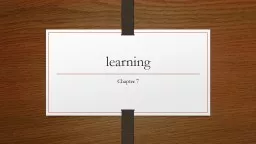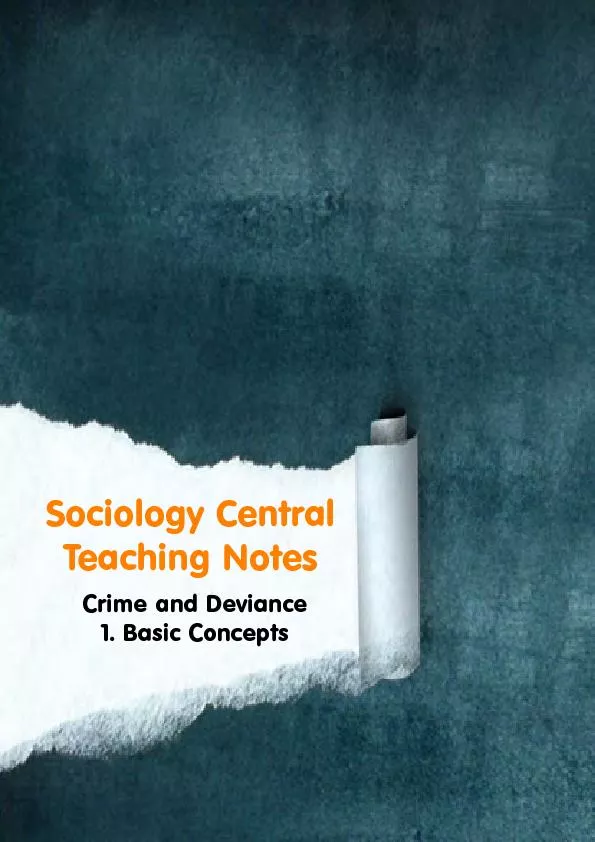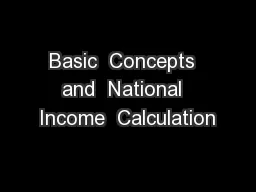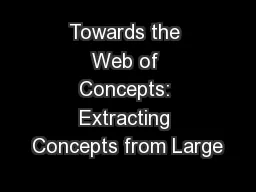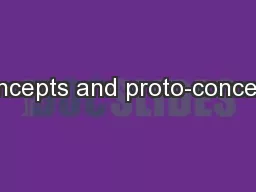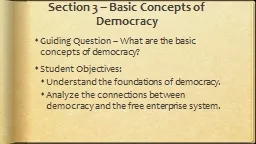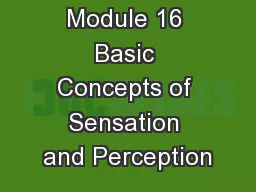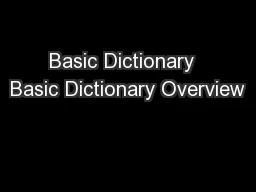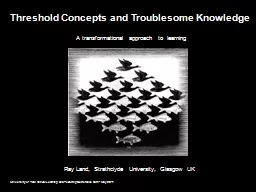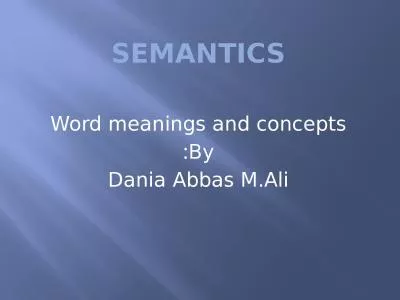PPT-learning Chapter 7 Basic Learning Concepts
Author : lois-ondreau | Published Date : 2018-03-15
What is learning Process of acquiring through experience new information or behaviors How do we learn Through association Certain events occur together Classical
Presentation Embed Code
Download Presentation
Download Presentation The PPT/PDF document "learning Chapter 7 Basic Learning Concep..." is the property of its rightful owner. Permission is granted to download and print the materials on this website for personal, non-commercial use only, and to display it on your personal computer provided you do not modify the materials and that you retain all copyright notices contained in the materials. By downloading content from our website, you accept the terms of this agreement.
learning Chapter 7 Basic Learning Concepts: Transcript
Download Rules Of Document
"learning Chapter 7 Basic Learning Concepts"The content belongs to its owner. You may download and print it for personal use, without modification, and keep all copyright notices. By downloading, you agree to these terms.
Related Documents

